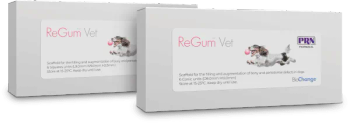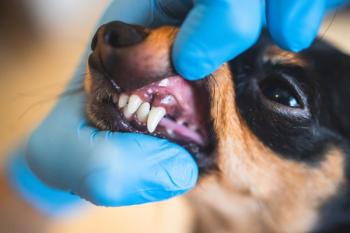
- dvm360 April 2023
- Volume 54
- Issue 4
- Pages: 24
D is for dental organizations
A closer look at the world of organized dentistry
Of course, in the dental alphabet, “D” is for dentistry. I considered discussing the top 15 dental conditions to embrace. Instead, I chose to share a different aspect—organized dentistry, the bodies behind dentistry serving veterinarians, technicians, and the public.
The foundation of veterinary dentistry
The first formal veterinary dental organization was the American Veterinary Dental Society, which was formed in 1976 but would eventually merge with the Foundation for Veterinary Dentistry in 2016. The foundation, still very much in existence, is an umbrella organization that does the following1:
- Supports outreach to practitioners, humane societies, and the public regarding the importance of oral health in animals
- Supports veterinary universities with dental equipment, student wet labs, and teaching tools for students
- Advances the science of veterinary dentistry with annual research grants for future presentations and scientific publications
- Publishes the Journal of Veterinary Dentistry, a quarterly periodical geared to the practicing veterinarian; subscribers automatically become foundation members
- Hosts the yearly Veterinary Dental Forum, established in 1987 to further educate those interested in veterinary dentistry
Veterinary dentistry membership opportunities
As more practitioners became acquainted with veterinary dentistry, the Academy of Veterinary Dentistry was formed in 1987 to recognize veterinarians with an increased interest in the field. Although not formally recognized by the American Veterinary Medical Association as a specialty organization, a fellow of the Academy of Veterinary Dentistry had additional training and passed a credentialing process and examination. The Academy of Veterinary Dentistry no longer accepts applications for membership and will soon sunset.
The American Veterinary Dental College (AVDC) was created in 1988 and certifies veterinarians as dental specialists.2 AVDC determines standards for board certification of veterinary dentists. It also is in charge of reviewing credentials and administering examinations for individuals in the process of becoming board-certified veterinary dentists or board-certified equine veterinary dentists.
A veterinarian can apply to become a full- or part-time resident through many veterinary medicine colleges or private practices. After the 3-year residency is completed, the veterinarian may sit for the written and practical examination to become a board-certified veterinary dentist. There are 235 non–species-specific and 25 equine board-certified veterinary dentists in the United States.
The AVDC’s website is a great resource for veterinary professionals, especially the nomenclature section, which not only lists abbreviations for hundreds of dental conditions but also supplies images that practitioners may use without permission for educational purposes.2
The AVDC has also formulated and posted position statements on how veterinary dentistry should be practiced. Examples include Veterinary Dental Healthcare Providers, Companion Animal Dental Scaling Without Anesthesia, and The Use of Antibiotics in Veterinary Dentistry.
In addition to the expert care of individual patients provided by diplomates, the AVDC sponsors the Veterinary Oral Health Council (VOHC), which awards the VOHC Seal of Acceptance to oral home care products that meet preset standards of effectiveness in dental plaque and calculus control. VOHC consists of 5 volunteer board-certified veterinary dentists and an executive director. VOHC reviews applications and accepts products that in 2 well-defined studies decrease accumulation of plaque and/or tartar by at least 20%. The list of dog and cat products is printable to give to clients.
The Academy of Veterinary Dental Technicians
The Academy of Veterinary Dental Technicians (AVDT)—created in 2000 and operating under the direct approval of the National Association of Veterinary Technicians in America—certifies a registered licensed veterinary technician as a veterinary technician specialist (VTS) in the field of dentistry.3 Candidates must complete 75 cases in all aspects of veterinary dentistry, write 5 case reports, and complete 21 hours of continuing education lectures plus 27 hours of laboratories prior to taking a 2-part exam (written and practical). Currently, there are 114 individuals in the US certified as a VTS in dentistry.
The Foundation for Veterinary Dentistry, the AVDC, and the AVDT have enhanced dental knowledge, and improved equipment and materials. With these organizations, veterinary professionals, our patients, and their caregivers all win.
Jan Bellows, DVM, DAVDC, DABVP, FAVD, received his undergraduate training at the University of Florida and his doctorate in veterinary medicine from Auburn University. After completing an internship at the Animal Medical Center in New York, New York, he returned to Florida, where he practices companion animal medicine surgery and dentistry at All Pets Dental in Weston. He has been certified by the American Board of Veterinary Practitioners (canine and feline) since 1986 and the American Veterinary Dental College (AVDC) since 1990. He was president of the AVDC from 2012 to 2014 and is president of the Foundation for Veterinary Dentistry.
References
- Home page. Foundation for Veterinary Dentistry. Accessed March 17, 2023. https://veterinarydentistry.org
- About AVDC. American Veterinary Dental College. Accessed March 17, 2023. https://avdc.org/about
- Home page. Academy of Veterinary Dental Technicians. Accessed March 17, 2023. https://www.avdt.us
Articles in this issue
over 2 years ago
“Vet shopping” is an alarming trend in opioid prescribingover 2 years ago
Cardinal rules for building effective communicationover 2 years ago
The veterinary practice operating systemover 2 years ago
Uniting the front and back teamsover 2 years ago
Interdigital furunculosis: medical and surgical optionsover 2 years ago
Conscious clarity: The path to self-loveover 2 years ago
Oncology myths, part 2over 2 years ago
Veterinary supervisionover 2 years ago
Working together to maximize spectrum of careNewsletter
From exam room tips to practice management insights, get trusted veterinary news delivered straight to your inbox—subscribe to dvm360.






